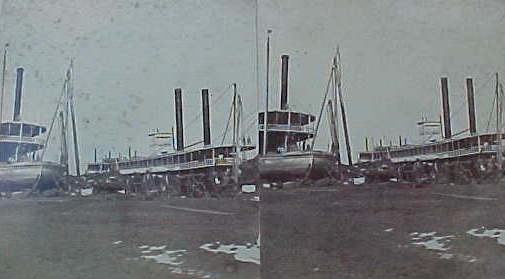
Stereograph, The Nelly Peck
on left, the
Far West, on right, undated.
In 1876, the Far West, under the command of
Captain Grant P. Marsh, was under charter to the Army and was being used as
a mobile headquarters for General Terry on the Yellowstone. The vessel, constructed
in 1870 in Pittsburgh was 190 ft. in length, and 20 ft. in width, and was ideally
suited for use in western waters drawing only 20 inches when unladen.
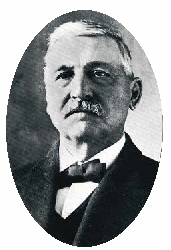 Captain Grant P. Marsh
Captain Grant P. Marsh
In the 1870's communications in northern Wyoming Territory, eastern Montana, and
Dakota Territory, notwithstanding the invention of the telegraph, institution of
railroads, and operation of stage lines, were no better and, in fact, worse
than communications in the 6th Century B.C. when Cyrus the Great created a system
of mounted relay stations to carry imperial communications. By the time of
Rome, relay stations were established on post roads, enabling messages to be carried
170 miles in a day. In 1861, the telegraph line had been stretched to the Pacific Coast. Yet except in
Utah where Brighan Young had connected all Mormon communities to the Deseret Telegraph
Line fron Idaho to northern Arizona, messages on the Western Frontier still had to be carried by hand.
Indeed, even though the Civil War was the first war to make extensive use of
the telegraph, even at its end communication was painfully slow. Thus,
as an example, in 1865, President Davis commissioned emissaries to negotiate
with the western Indians and bring a lasting peace to the Great Plains. Accordingly, on
May 1, 1865 representatives of the Apache, Pawnee, Osage, Kickapoo, Washita, Kiowa,
Commanche, Cheyenne, Arapaho, Navajo, and Sioux, gathered at Washita on the Confederate
Western Frontier. There, the representatives of the southern Great Father and the tribes
signed a treaty, none knowing that the Great Father had already fled his
capital in advance of the hosts of the northern Great Father. Indeed, in Indian
Territory the last Confederate civil and military forces did not surrender until
the middle of July.
 Alfred H. Terry Alfred H. Terry
Thus, by 1876 the closest telegraph lines to the Little Bighorn were at
Ft. Ellis, over 200 miles to the west; Ft. Fetterman to the south; Camp Stambaugh near
South Pass City; and Bismarck, 700 miles to the east. This made coordination of military movements between
different forces difficult, since as discussed with regard to Ft. Fetterman, it was
proposed the have a three pronged attack upon the Indians, one prong led by
General Gibbon coming from Fort Shaw to the west, Terry and Custer coming from Fort
Abraham Lincoln to the east, and Gen. Crook coming north from Fort Fetterman.
Later in the attempt to capture Geronimo in Arizona, Gen. Miles attempted
to alieviate the problem of communication through the use of the heliograph.
Other difficulties existed with communication. On July 11, the New York Tribune published a
dispatch from its "occasional correspondent," dated June 21, which described one of the
hazards of mail:
ROSEBUD AND YELLOWSTONE RIVERS, June 21. --
My last letter was written at the mouth of the Powder River shortly after the arrival
of Gen. Terry's expedition there. The mail was taken by the steamer Far West, Capt. Grant Marsh, to
the stockade, thence to be sent to Fort Buford by the Mackinaw boat. An
unfortunate accident occurred just as the bag had been put in and the boat was cast loose. The rapid current
of the river carried it against the steamer and it capsized. Sergeant Fox, an old
soldier from Fort Buford, was drowned. The mail, though wet, was
recovered and forwarded.
For discussion and description of Mackinaw boats, see Rendezvous.
The "occasional correspondent" for the Tribune was possibly Custer himself.
Custer had been known to have anonymously provided dispatches to newspapers. Custer in a letter
to Mrs. Custer relates the same incident as to the possible loss of his mailbag. Fortunately, a young correspondent and telegrapher recognized
Custer's mail. Thus, it was rescued and dried out by Capt. Grant and others. One of the
items in the mailbag was an article being sent to The Galaxy, a monthly magazine for
whom Custer had been providing his Memoirs.
In light of Custer's subsequent failure to await the arrival of Gibbon and Custer's own division of his
forces, the articles contain a certain irony. In the October, 1876, article received by the
magazine following Little Bighorn, Custer blames McClellan's failure to proceed against Richmond on
Lincoln's dividing the armed forces. Custer asks, "What general commanding an army at any
later period of the war, confronting the enemy and about to engage in battle upon
matured plans, would have been willing to risk a general engagement with his
army reduced unexpectedly more than one-third on the very eve of battle?" "War Memoirs," The Galaxy. Vol. XXII --
October, 1876 -- No. 4, p. 451. We, perhaps, now know the answer.
Intriguingly, in the last line of the article, the last line ever written by
Custer for publication, Custer suggests that his later
fame was as a result of an incident on a small stream easily forded by horses and in places
scarcely ten yards in width, "the Chicahominy river, a stream which, however chargeable with some of the
misfortunes of the Army of the Potomac, was almost literally a stepping-stone for my
personal advancement." The incident on the Chicahominy: The overly cautious George
McClellan was dithering about the depth of the river. A young impetuous lieutenant spurred
his horse into the middle of the stream heedless of the danger, "That's how deep it is, General!" Thus, Custer's
career began as it ended, upon impulse without forethought.
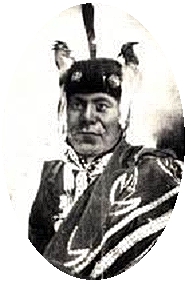 Mitch Bouyer, see text lower on page.
Mitch Bouyer, see text lower on page.
By June 27, General Terry had picked up disturbing accounts from Indian Scouts that
disaster had overtaken George Armstrong Custer's force. Terry directed the Far West to
be moved to the mouth of the Little Bighorn. On June 25, not waiting for
additional forces from John Gibbon as would have been indicated by previously formulated plans,
Custer divided his forces into three battalions. In the afternoon, Major Reno's allegedly
caught the last sight of Custer on a distant ridge. In the mid afternoon, two messages were
delivered to Captain Fredrick Benteen , a request delivered by Sgt. Daniel Kanipe that the mule train be moved
forward with reserve ammunition and the message delivered by Custer's bugler Pvt. John Martin,
"Benteen come on. Big village. Be quick. Bring packs. P.S. Bring pacs."
Martin (18 ? - 1922) was an Italian immigrant, originally Giovanni Martini, who spoke but
poor English. Martin prior to his immigration to the United States, served as Garibaldi's Tamburino, drummer,
in the Trentino campaign of 1866. The campaign was a part of the Third War of Italian Unification against
Austria which held the Trentino now a part of Northern Italy. Garibaldi was
successfully pushing the Austrians back when he received orders from General La Marmora to retreat.
Garibaldi responded with his famous obbedisco, "I obey." Thus,
Trentino remained a part of Austria until World War I. Following the
end of the Italian Wars of Unification, Martin allegedly abandoned a wife and child and came
to the United States, enlisting in the Army in 1874. In the Army a bugler also acted as
an orderly and, thus, it would not be unexpected for the bugler to deliver a message. The date and
location of Martin's birth is uncertain. At least four different areas of Italy claim to be
his birth place: Sala Conizalina, Apricale, Liguria, and Romagna. Different dates of birth are
given ranging from 1841 to 1852. He remained in the Army serving in Cuba during the
Spanish-American War. Following that war, Martin allegedly abandoned a wife and
three children in Baltimore City and moved to Brooklyn. He retired from the
Army in 1904 and eventually took employment as a ticket taker for the New York subway system at
the 103rd Street Station. He died on December 24, 1922 after being struck by a truck.
As we are aware, Benteen and Reno ran into problems of their
own and were not able to join Custer.
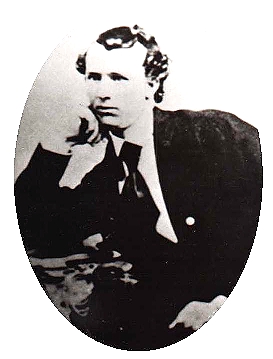 Boston Custer
Boston Custer
With Custer there were approximately 250 men, including
his brothers Tom and Boston, as well as his nephew Autie Reed and brother-in-law
James Calhoun. Autie had just turned 18 on April 27th. When Martin's message came, Boston and Autie were with the
pack train. They rode off to join George and Tom Custer. To some extent,
the expedition was like a family reunion. In several letters to his wife, Libby, Custer writes of playing jokes
on "Bos." In his letter of June 17, he wrote:
We all slept in the open air around the fire, Tom and I under a fly, "Bos"
and Autie Reed on the opposite side. Tom pelted "Bos" with sticks and clods
of earth after we had retired. I don't know what we would do without "Bos"
to tease.... Yesterday Tom and I saw a wild-goose flying over-head quite
high in the air. We were in the bushes and could not see each other.
Neither knew that the other intended to fire. Both fired simultaneously,
and down came the goose, killed. Don't you think that pretty good shooting
for rifles?
Teasing between the brothers was nothing new. In the 1874 expedition, George and Tom Custer scared
the wits out of their younger brother when he was riding alone by pretending to be Indians. On
another occasion they secreted a rattle snake in a trunk so as to frighten anyone who sat upon the
trunk. There are some indications that Custer himself regarded the 1876 expedition as more of a
junket rather than a dangerous military campaign. He invited naturalist George Bird Grinnell and
noted world traveller the Earl of Dunraven and the Earl's cousin Dr. George Henry Kingsley along. Grinnell
declined the invitation. Dr. Kingsley had written Mrs. Kingley from America indicating that
the Earl and Kingsley had accepted the invitation. Mrs. Kingsley had considerable angst. News of
the massacre reached Mrs. Kingsley before a
subsequent letter from Dr. Kingsley relating that the two had been unable to join the campaign because
of bad weather.
But the Custer Brothers were not the only ones who treated the expedition as
somewhat of a lark and frolic. The New York Tribune correspondent noted the
dispatch of June 21, that crewmen on board Gen. Terry's supply steamer Far West
panned for gold along the Yellowstone River with a show of "colors."
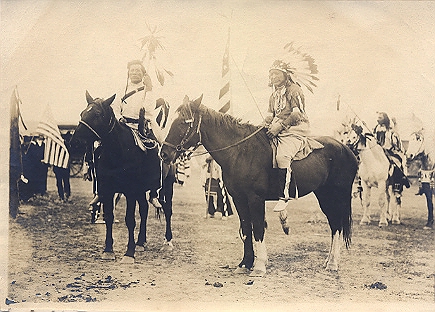 White Swan and Curley, Sheridan, Wyo., Oct. 1903, photo by B. C. Buffum.
Photo courtesy of and copyrighted
by Ben and Mary Sue Henszey.
White Swan and Curley, Sheridan, Wyo., Oct. 1903, photo by B. C. Buffum.
Photo courtesy of and copyrighted
by Ben and Mary Sue Henszey. For information as
to B. C. Buffum, see Cheyenne.
Accompanying Custer and his forces after their separation from Benteen and Reno
were four Crow Scouts: Curley, Goes Ahead, Hairy Moccasin and White Man Runs Him. two crow scouts remained
with Reno, Half Yellow Face and White Swan.
When Custer's troop came into contact with the Indian village, the scouts were excused;
they had done their job. Among them, Curley refused to leave. Nevertheless,
Mitch Bouyer [sometimes spelled "Boyer"], one of Custer's mixed-blood French and Lokota
guides, insisted that the 17 year old Curley depart, allegedly telling Curley that
"We have no chance at all," and relay the message to Terry that "all are killed." In 1983, archeological
exploration of the battlefield was conducted. Previously unidentified remains were found. Using
modern forensic science, the remains of Boyer were identified.
Curley departed and was, thus, was able to observe the battle with a spy glass
from a ridge about a mile and a half away. He then eluded the Sioux by
crawling through coulees until he found the pony of a dead Sioux, taking the Sioux' pony
and blanket, he then rode two and a half days until he found the Steamboat Far West, where through sign
lanquage and drawing he was able to disclose the disaster. Because of language difficulties, however,
the extent of the disaster was not fully realized.
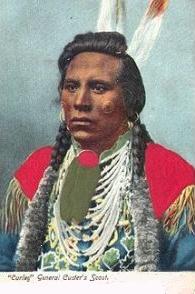 Curley, undated
Curley, undated
The following day, June 28, a rider appeared on the bank of the river being chased by Indians. Making it on
board, the rider, H. M. "Muggins" Taylor, bore a message from Gen. Terry giving the extent of the
Disaster. Terry later reported that scouts had been sent out about midnight
on the 25th:
The scouts were sent out. At half past four, on the morning of the 26th, they discovered
three Indians, who were at first supposed to be Sioux, but when overtaken they
proved to be Crows who had been with General Custer. They brought the first intelligence of the
battle. Their story was not credited. It was supposed that some fighting, perhaps
severe fighting, had taken place, but it was not believed that disaster could have
overtaken so large a force as twelve companies of cavalry.
[Writer's note: The three scouts were apparently Goes Ahead, Hairy Moccasin and White Man Runs Him,
who had been excused when Sitting Bull's camp was reached.]
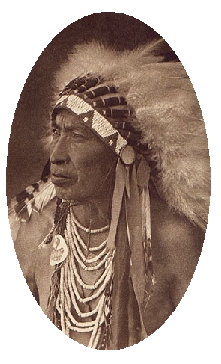 Hairy Moccasin, 1907.
Hairy Moccasin, 1907.
Hairy Moccasin, along with White Man Runs Him and Goes Ahead, were orignally assigned to
Major Reno's unit, but were reassigned to Custer's unit on June 25. After they were dismissed by
Mitch Boyer, they participated in the Hill Top Fight before making good their escape were they joined
Strikes the Bear, before meeting up with Col. Gibbon's unit.
On the evening of July 27, the full extent of the disaster was realized by Gen. Terry and a dispatch was prepared and
given to Muggins Taylor to be taken to the nearest telegraph at Ft. Ellis. Taylor had
received his nickname as a result of his love of the card game "Muggins." Taylor later served
as a deputy sheriff in Coulson, Montana, where he was killed in 1882 when attempting
to stop a domestic disturbance in a laundry.
Taylor was intercepted by Indians and had to hide in among some rocks overnight. The next morning, he made
good his escape and was pursued to the Far West. He remained on board
until the 29th, when he resumed his ride toward Ft. Ellis 229 miles away.
On July 3rd the dispatch was delivered, pursuant to instructions, to Capt.
T. D. Bonham, who, in turn, filed it with the telegraph office. The next day, Capt. Bonham checked with the office
to see if it had been sent, but the office was closed, it being the 4th of July.
The next day, Capt. Bonham checked on the status of his dispatch and
was advised that the line was down and he was told to send
the dispatch by mail to Chicago. Thus, General Terry's report did not
reach Chicago until 1:10 a.m. on July 7. From there it was relayed to
Gen. Sheridan at the Continental Hotel in Philadelphia arriving on July 8, long after
the dispatches from the Bismarck Tribune had been published in
eastern papers. Sheridan, in turn,
forwarded the report to Gen. Sherman at the War Department in Washington.
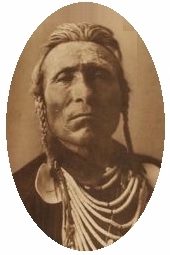 Goes Ahead, photo by Edward S. Curtis (1868-1952).
Goes Ahead, photo by Edward S. Curtis (1868-1952).
______________________________
[TELEGRAM]
Philadelphia, July 8, 1876
General William T. Sherman, Washington, D.C.:
The following just received from Drum, and forwarded for your information,
----------
Chicago, Ill., July 7, 1876 --- 1.10 a.m.
General P. H. Sheridan, U.S.A.,
Continental Hotel
The following is General Terry's report, received late at night, dated
June 27:
"It is my painful duty to report that day before yesterday, the 25th instant,
a great disaster overtook General Custer and the troops under his command.
At 12 o'clock of the 22nd instant he started with his whole regiment and a
strong detachment of scouts and guides from the mouth of the Rosebud;
proceeding up that river about twenty miles he struck a very heavy Indian
trail, which had previously been discovered, and pursuing it, found that it
led, as it was supposed that it would lead, to the Little Big Horn River.
Here he found a village of almost unlimited extent, and at once attacked it
with that portion of his command which was immediately at hand. Major Reno,
with three companies, A, G, and M, of the regiment, was sent into the valley
of the stream at the point where the trail struck it. General Custer, with
five companies, C, E, F, I, and L, attempted to enter about three miles
lower down. Reno, forded the river, charged down its left bank, and fought
on foot until finally completely overwhelmed by numbers he was compelled to
mount and recross the river and seek a refuge on the high bluffs which
overlook its right bank. Just as he recrossed, Captain Benteen, who, with
three companies, D, H, and K, was some two (2) miles to the left of Reno
when the action commenced, but who had been ordered by General Custer to
return, came to the river, and rightly concluding that it was useless for
his force to attempt to renew the fight in the valley, he joined Reno on
the bluffs. Captain McDougall with his company (B) was at first some
distance in the rear with a train of pack mules. He also came up to Reno.
Soon this united force was nearly surrounded by Indians, many of whom armed
with rifles, occupied positions which commanded the ground held by the
cavalry, ground from which there was no escape. Rifle-pits were dug, and
the fight was maintained, though with heavy loss, from about half past
2 o'clock of the 25th till 6 o'clock of the 26th, when the Indians withdrew
from the valley, taking with them their village. Of the movements of
General Custer and the five companies under his immediate command,
scarcely anything is known from those who witnessed them; for no officer
or soldier who accompanied him has yet been found alive. His trail from the
point where Reno crossed the stream, passes along and in the rear of the
crest of the bluffs on the right bank for nearly or quite three miles; then
it comes down to the bank of the river, but at once diverges from it, as if
he had unsuccessfully attempted to cross; then turns upon itself, almost
completing a circle, and closes. It is marked by the remains of his
officers and men and the bodies of his horses, some of them strewn along
the path, others heaped where halts appeared to have been made. There is
abundant evidence that a gallant resistance was offered by the troops, but
they were beset on all sides by overpowering numbers. The officers known
to be killed are General Custer; Captains Keogh, Yates, and Custer, and
Lieutenants Cooke, Smith, McIntosh, Calhoun, Porter, Hodgson, Sturgis,
and Reilly, of the cavalry. Lieutenant Crittenden, of the Twelfth Infantry,
along with Acting Assistant Surgeon D. E. Wolf, Lieutenant Harrington of
the Cavalry, and Assistant Surgeon Lord are missing. Captain Benteen and
Lieutenant Varnum, of the cavalry are slightly wounded. Mr. B. Custer, a
brother, and Mr. Reed, a nephew, of General Custer, were with him and were
killed. No other officers than those whom I have named are among the killed,
wounded, and missing.
It is impossible yet to obtain a reliable list of the enlisted men killed
and wounded, but the number of killed, including officers, must reach two
hundred and fifty. The number of wounded is fifty-one. The balance of report
will be forwarded immediately."
R. C. DRUM,
Assistant Adjutant-General
P. H. Sheridan,
Lieutenant General
----------
Supplementary report from General Terry, received at War Department at 12
o'clock, m.
[illegible] list of the enlisted men killed and wounded, but the number
of killed, including officers, must reach two hundred and fifty. The number
of wounded is fifty-one. The balance of report will be forwarded
immediately."
R. C. DRUM,
Assistant Adjutant-General
P. H. Sheridan,
Lieutenant General
----------
Supplementary report from General Terry, received at War Department at 12
o'clock, m.
Philadelphia
The Far West was not able to leave for
Bismarck until the 30th after Reno's wounded were loaded on the deck of the Far West, where
members of the 7th Cavalry Band acted as medics.
The vessel was then able to steam the 710 miles in only 54 hours, arriving at
Fort Abraham Lincoln at 11:00 p.m. on July 5.
At 2:00 a.m., Capt. William S. McCaskey, summoned all officers to his quarters at
Ft. Lincoln and read the dispatch from Capt. Edward W. Smith, General Terry's
adjutant. At 7:00 a.m. Capt. McCaskey, accompanied by Lt. Charles Gunley, and Post Surgeon,
Dr. J. V. D. Middleton, broke the news to Mrs. Custer and the other women members of the
Custer family. Although the day was hot, Mrs. Custer required a wrap and shivered. Mrs. Calhoun
apparently failed to comprehend that her husband, brothers, and nephew were gone, ran after
Capt. McCaskey, asking, "Is there no message for me?"
Next page: Reno and Benteen.
|